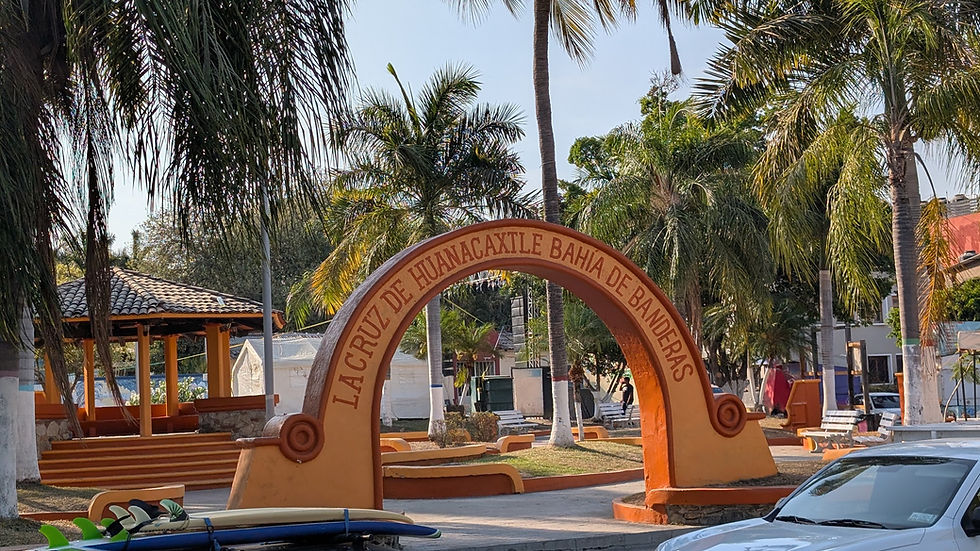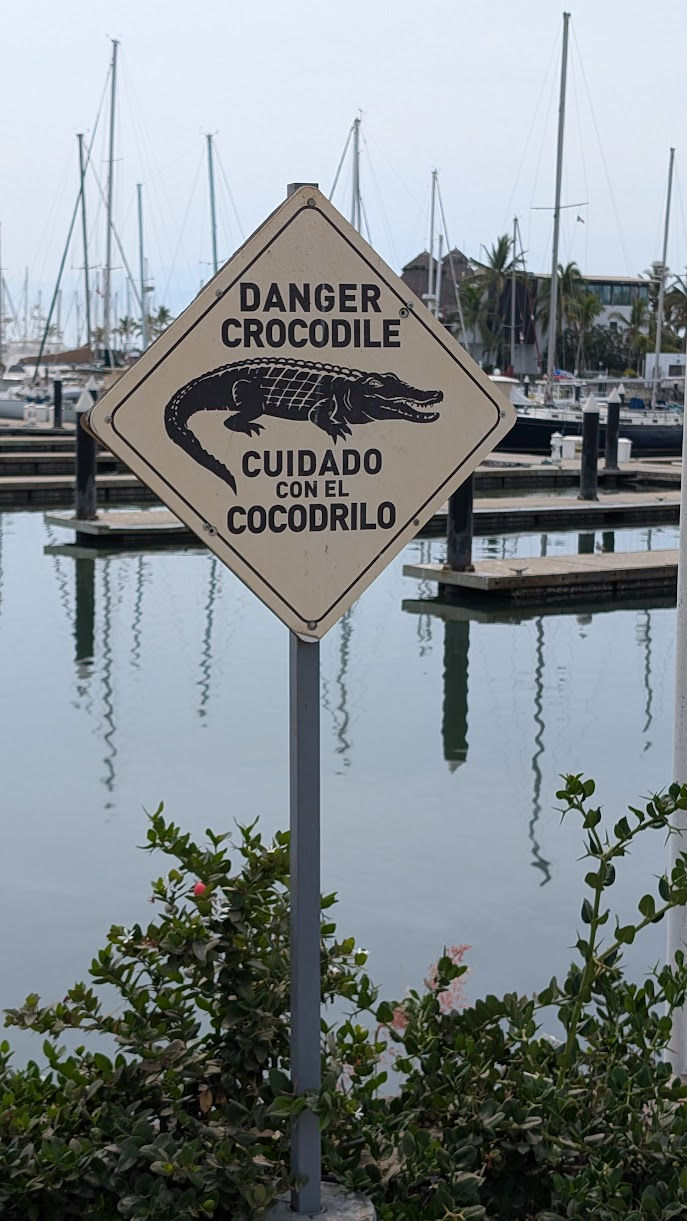La Cruz de Huanacaxtle
- Capt. Eric
- Jul 28
- 6 min read

Once we reached the mainland after leaving Refugio in the North of the Sea of California, our plan was rather basic: Take our time, jumping from anchorage to anchorage, arriving in Bahia de Banderas no later than 15th May.
With our lax approach to long term planning, I simply took the overall distance down to Bahia de Banderas, divided by 30 on the assumption we'd find an anchorage round about every 30 miles or so. Then, I multiplied the result by the number of days we'd want to spend on average in each anchorage, giving me a very rough idea of how long we'd take to get there. That approach had worked well on the West side, the Baja Peninsula.
As we set off on our Southerly cruise, I started realizing that anchorages were few and far apart. A couple of times we had to jump over 200 miles to find our next anchorage, so in effect ended up going much faster than anticipated.

We went through zones considered dangerous and classified with all sorts of dark colors and strong warnings on various travelers' and governments' sites. Whilst we never felt in any danger, we felt it was prudent to take basic precautions and not linger in the same spot for long, especially with fishing villages and local boat traffic nearby. In more isolated spots, we'd still limit our stays, but could dare stay a little longer.
Best and safest were the few marinas along the way. San Carlos, Guaymas, Topolobampo, Mazatlan were about all of them.

All this combined meant that we reached the open waters of the Pacific ocean much earlier than anticipated. Then our speed problem became even more pronounced: Most bays -even those marked as good anchorages in cruising guides - were very open and subject to sometimes large ocean swells.
With a whole month to go until our 15th May deadline we were already in Chacala, only just over 40 miles away from the Bay of Banderas.
Anchoring in Chacala, we got as close to the beach and the cliffs as we dared to seek some escape from the unrelenting swells. Watching our few sailboat neighbors, we could see their masts swinging wildly with each wave and we were happy that ENFIN is heavy, and resists waves action well once we rig our flopper stopper. This was an OK anchorage for a night, not a place to spend weeks on end.

We took Princess ashore by kayak, surfing the big waves all the way in to the beach, seconds away from spilling out and wiping in the waves. Sporty to say the least!
It was fun meeting your typical "surfer dude" from the US a couple of days later telling us the waves in Chacala had been "radical" the last few days! Paradise for a surfer isn't what works for cruisers at anchor.
Once back on the boat, thoroughly soaked from punching back out through the waves, we got back to our usual anchorage routine. The generator auto-started, allowing us to use a little cooling AC before sleep, and we set to sleep at our usual time. Of course, I'd made triple sure our anchor was holding and our anchor alarms were ready to scream should things change.
Just after midnight, the sea breeze died, and a shore breeze started building up. ENFIN swung slowly around our anchor to head into the wind, but doing so put us parallel to the waves for a while. Again our flopper stopper did an amazing job, but it confirmed our view that this place wasn't going to be a long term anchorage. We'd be off the next morning.
Some recommend using a stern anchor in those conditions. That works for small light sailboats in my opinion, but 25 tons ENFIN would require a much beefier anchor than I'd want to handle at 3 in the morning when the bow anchor starts dragging and the beach is getting close.

We'd meant to stop in La Cruz anyway, at the north end of Bahia de Banderas, so that morning decided we'd simply extend our stay from a few days to a whole month, until it was time to go hide for hurricane season. Luckily ENFIN's small size meant the marina had an available slip for us immediately.
La Cruz proved to be a very pleasant stop, and our month there flew by. For the first time since leaving Puerto Marina Escondido in mid winter we were able to order a few things. Even better, the village has many small "tiendas" (shops) with fresh produce and more at very reasonable prices. We particularly enjoyed our local fruit and vegs shop, filling up our large wheeled trolley to the brim with delicious avocados, tomatoes, strawberries and more. All for about 15 US dollars.
Did I mention they also have my favorite ice cream shop on the main street?
Using a taxi or car rental you can also reach the large supermarkets of nearby Buscerias, Nuevo Nayarit and Puerto Vallarta.

La Cruz is a funny and interesting place: A huge, modern and well appointed marina (not cheap!) in the middle of a tiny village. I guess it's a matter of "build it and they will come" but as things stand, the marina is much bigger than its surroundings.
This means there is a very decent ship-chandler up the road, a rarity in the whole of Mexico so far. Also plenty of restaurants geared to tourists, yet priced very decently, unlike those found in captive audience spots like private marinas in "gringolandia".
If it had potable water at the slips, it'd be the perfect spot. We were told varying stories about the water, and decided we'd filter and UV sanitize it, but otherwise would drink it since we were in dry season. We were fine, and neither of us got sick. In wet season with the risk of overflowing sewage systems, we'd have to buy potable water, a whole new set of complication.

With the reasonable prices, and the fact we hadn't been in restaurants much over the winter since we were in far away places, we enjoyed a good number of them. Our favorite was simply right in front of the marina, "Ballena Blanca", where on top of excellent Mexican food they also had BBQ ribs and burgers with a local twist.
On very lazy days (or when working hard on the boat) we could also order from various delivery services, or grab a couple of pizzas from the restaurant on the main plaza.
Followed by an ice cream of course!
The beautiful main square, just at the marina exit, is where many festivities were planned, often with loud music.
One thing you can count on in Mexico is fiestas and loud music, which is quite fun I think, as long as you live on a thick hulled boat like ours that can shield us from the noise. Otherwise prepare for sleepless nights, either suffering the noise in your boat, or partying with the locals!

We made very nice memories in La Cruz. It's still a small Mexican village, though it is changing very fast under our eyes. The vast expanse of towers and condos only a few miles South in Puerto Vallarta is slowly making its way to Busceria and La Cruz, with many new towers breaking ground all around.
We hesitated whether to switch our plans and spend hurricane season there or not, but decided to stick to our original plan, agreed with our insurer. La Cruz marina is safe, modern and well protected, but I think in a large hurricane waves would manage to bounce around the jetty and maybe make things a little too sporty. Of course there's the potable water situation too.
Fingers crossed we don't get to find out which spot is best, and all hurricanes this summer stay far away from Bahia de Banderas!



Comments